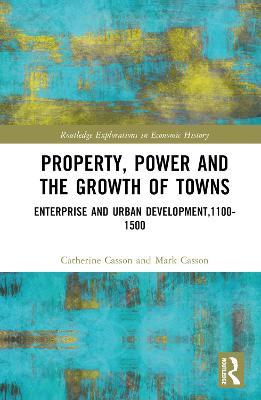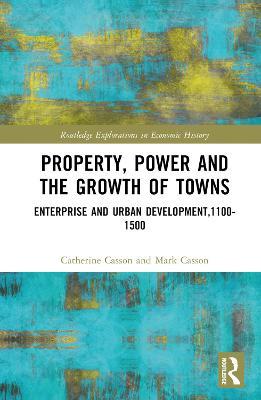L’articolo è stato aggiunto alla lista dei desideri
IBS.it, l'altro eCommerce
Property, Power and the Growth of Towns: Enterprise and Urban Development,1100-1500
Cliccando su “Conferma” dichiari che il contenuto da te inserito è conforme alle Condizioni Generali d’Uso del Sito ed alle Linee Guida sui Contenuti Vietati. Puoi rileggere e modificare e successivamente confermare il tuo contenuto. Tra poche ore lo troverai online (in caso contrario verifica la conformità del contenuto alle policy del Sito).
Grazie per la tua recensione!
Tra poche ore la vedrai online (in caso contrario verifica la conformità del testo alle nostre linee guida). Dopo la pubblicazione per te +4 punti
Prezzo minimo ultimi 30 giorni: 173,64 €



Tutti i formati ed edizioni
Promo attive (0)
Local enterprise, institutional quality and strategic location were of central importance in the growth of medieval towns. This book, comprising a study of 112 English towns, emphasises these key factors. Downstream locations on major rivers attracted international trade, and thereby stimulated the local processing of imports and exports, while the early establishment of richly endowed religious institutions funnelled agricultural rental income into a town, where it was spent on luxury goods produced by local craftsmen and artisans, and on expensive, long-running building schemes. Local entrepreneurs who recognised the economic potential of a town developed residential suburbs which attracted wealthy residents. Meanwhile town authorities invested in the building and maintenance of bridges, gates, walls and ditches, often with financial support from wealthy residents. Royal lordship was also an advantage to a town, as it gave the town authorities direct access to the king and bypassed local power-brokers such as bishops and earls. The legacy of medieval investment remains visible today in the streets of important towns. Drawing on rentals, deeds and surveys, this book also examines in detail the topography of seven key medieval towns: Bristol, Gloucester, Coventry, Cambridge, Birmingham, Shrewsbury and Hull. In each case, surviving records identify the location and value of urban properties, and their owners and tenants. Using statistical techniques, previously applied only to the early modern and modern periods, the book analyses the impact of location and type of property on property values. It shows that features of the modern property market, including spatial autocorrelation, were present in the middle ages. Property hot-spots of high rents are also identified; the most valuable properties were those situated between the market and other focal points such transport hubs and religious centres, convenient for both, but remote from noise and pollution. This book takes an interdisciplinary approach, drawing on expertise from the disciplines of economics and history. It will be of interest to historians and to social scientists looking for a long-run perspective on urban development.
L'articolo è stato aggiunto al carrello
L’articolo è stato aggiunto alla lista dei desideri



